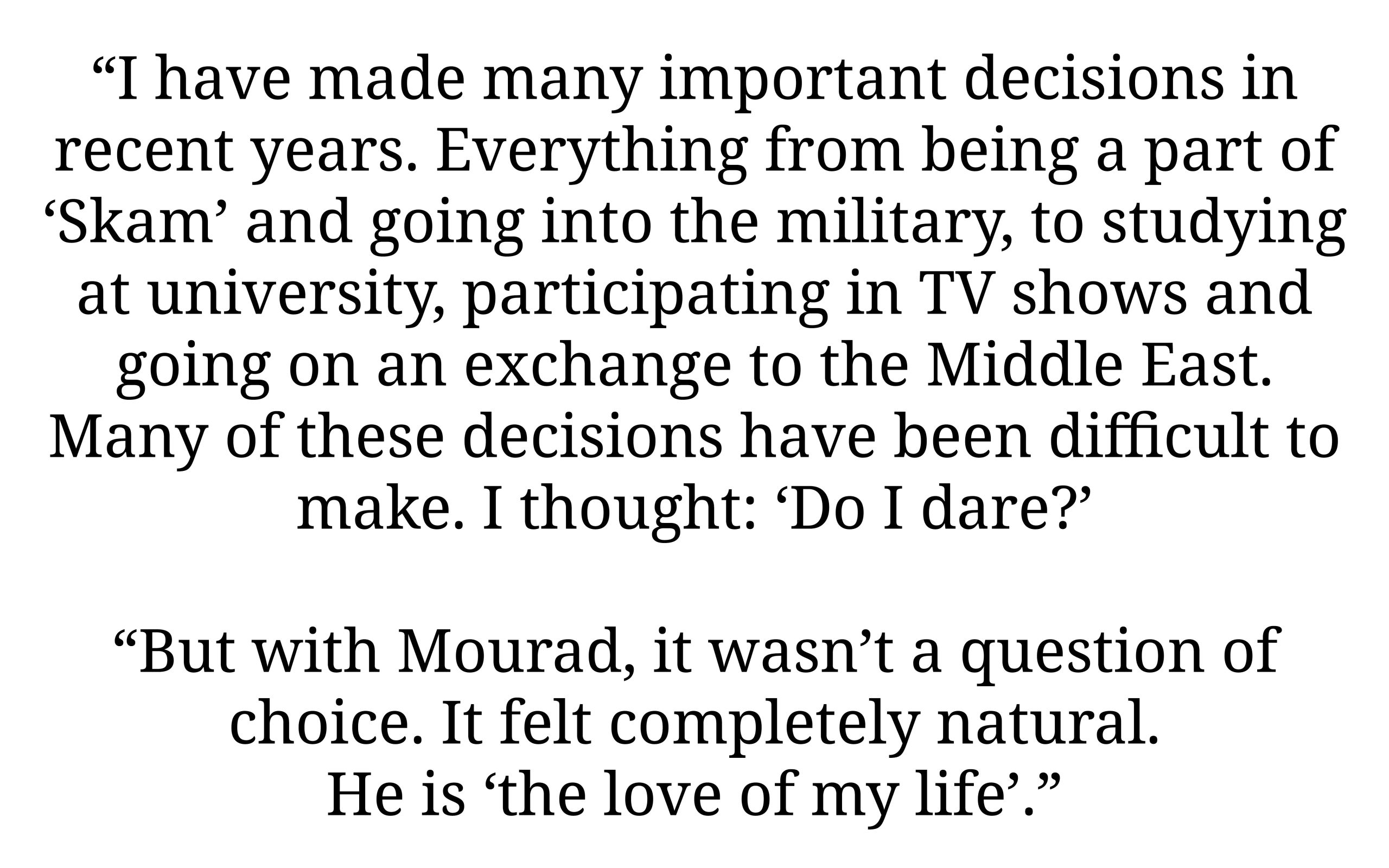In-depth interview
Long live love
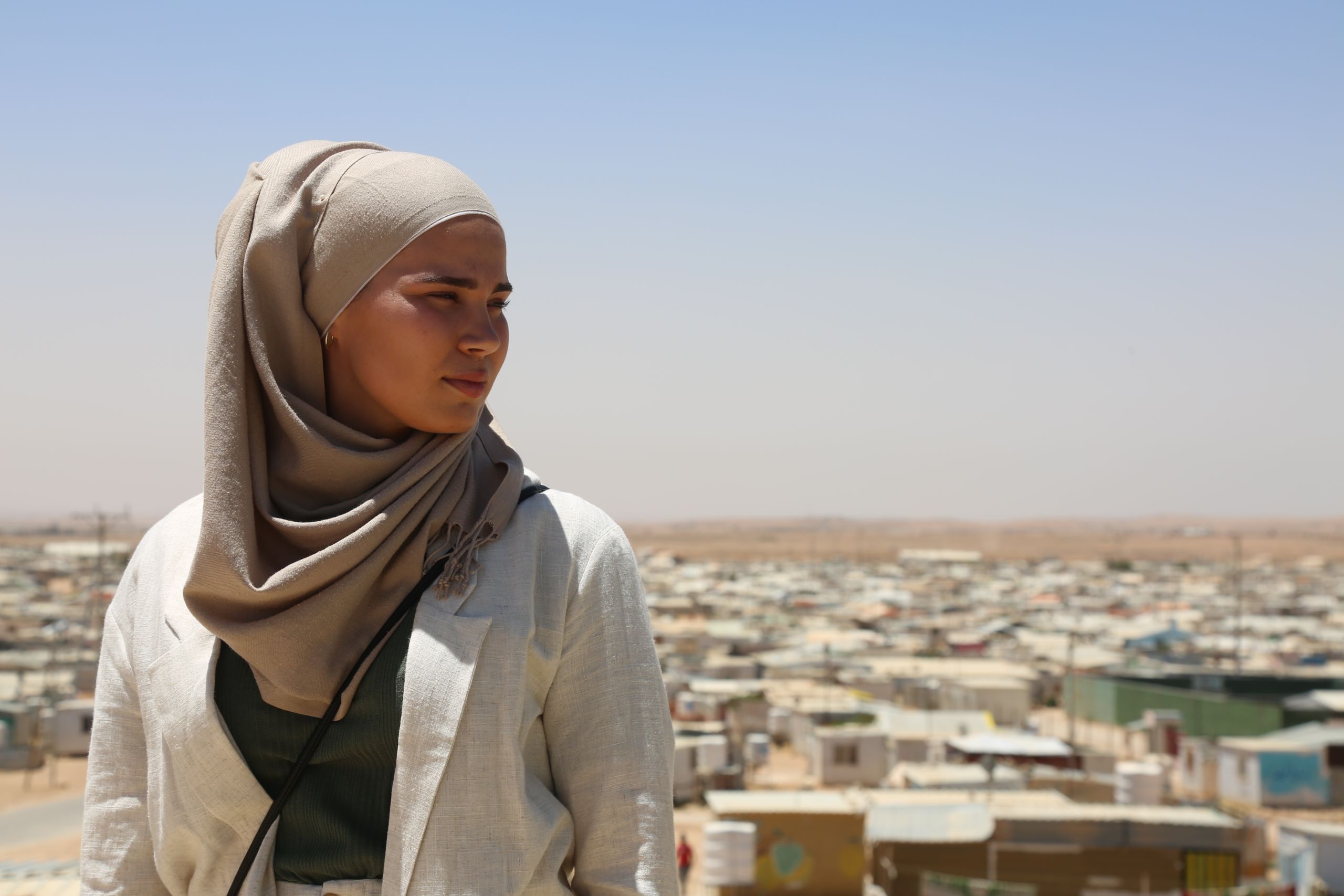
Iman Meskini, from the Norwegian web series “Skam”, was on a student exchange visit to Jordan in the Middle East when she decided to get married. She also visited the Norwegian Refugee Council (NRC) while she was there.
The University Botanical Garden in Oslo, built on the grounds of Tøyen Manor in 1814, is home to elegant avenues and romantic archways of braided willow, shrubs, greenhouses and flower beds with thousands of plant species.
The air is filled with the sounds of birds chirping and the clattering of cups and cutlery. Amid the bouquet of cafe guests of white-haired ladies and men on paternity leave is a young woman wearing a hijab. Her name is Iman Meskini, 22, known worldwide as Sana from the Norwegian web series “Skam”, produced by NRK P3.
She and Mourad Jarrari, 27, posed for their photos under an arch of green willow branches. The wedding itself, which took place one day in June in a mosque and in Oslo City Hall, was a well-kept secret until it was over. On Instagram, Iman posted a message that has so far received 267,786 likes:
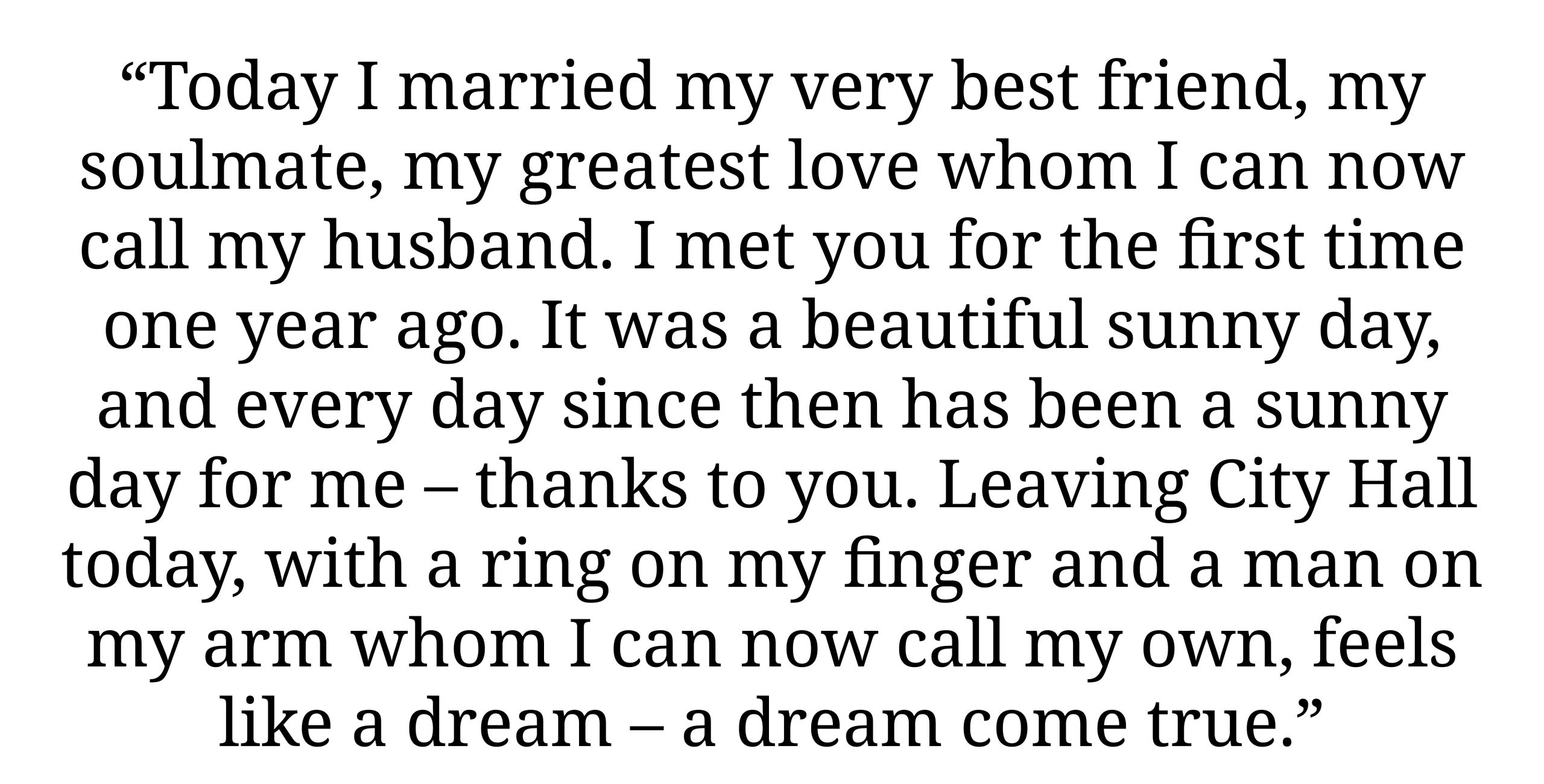
The marriage received attention in both the Norwegian and the international press.
The couple met at an event to promote diversity and integration, where Mourad was working as a volunteer.
– Was it love at first sight?
“There was interest at least. He was funny. Extremely funny. He had recently been a DJ at a concert put on by the Norwegian newspaper VG – and his hair was dyed bright yellow.”
At that time, Iman was in Oslo, on leave from the military, which she had joined to feel a sense of community. Wearing the uniform, everyone has the same value, regardless of their appearance or their past.
She says that the Arabic language has eight words for 'love'.

What does the Koran say about love?
“Lots of things. Of course, you have love of God. But first and foremost, the Koran encourages you to love your neighbour. And to love the earth, the animals and nature. To love your family. To love your mother.”
One day, Iman realised that she hardly remembered any of the Arabic language she had learned as a child. So she started studying Arabic at university.
“When I was one year old, we moved from Norway to Syria because my mother was studying Arabic – just like I am now. First, we lived in the capital, Damascus, and later we moved closer to the border with Lebanon. We had a big house, with a garden, chickens and a rooster. I went to a preschool and wore a school uniform. Before each weekend, the teachers told us: ‘Now, you must go home and kiss your parents on the forehead’. And we did. My parents liked living in Syria so much that we stayed there for five years.”
The first “Skam” clip was posted on the NRK website on 22 September 2015. A few days earlier, a three-year-old Syrian boy with a Kurdish background, Alan Kurdi, was found dead in Bodrum, Turkey. His family had fled the war in Syria and tried to cross the border from Turkey into Greece. The boy drowned in the Mediterranean, along with his brother Galib and mother Rehana. In the photograph, he was lying on his stomach, looking as if he were asleep. That photograph of Alan’s dead body on the beach shocked the world.
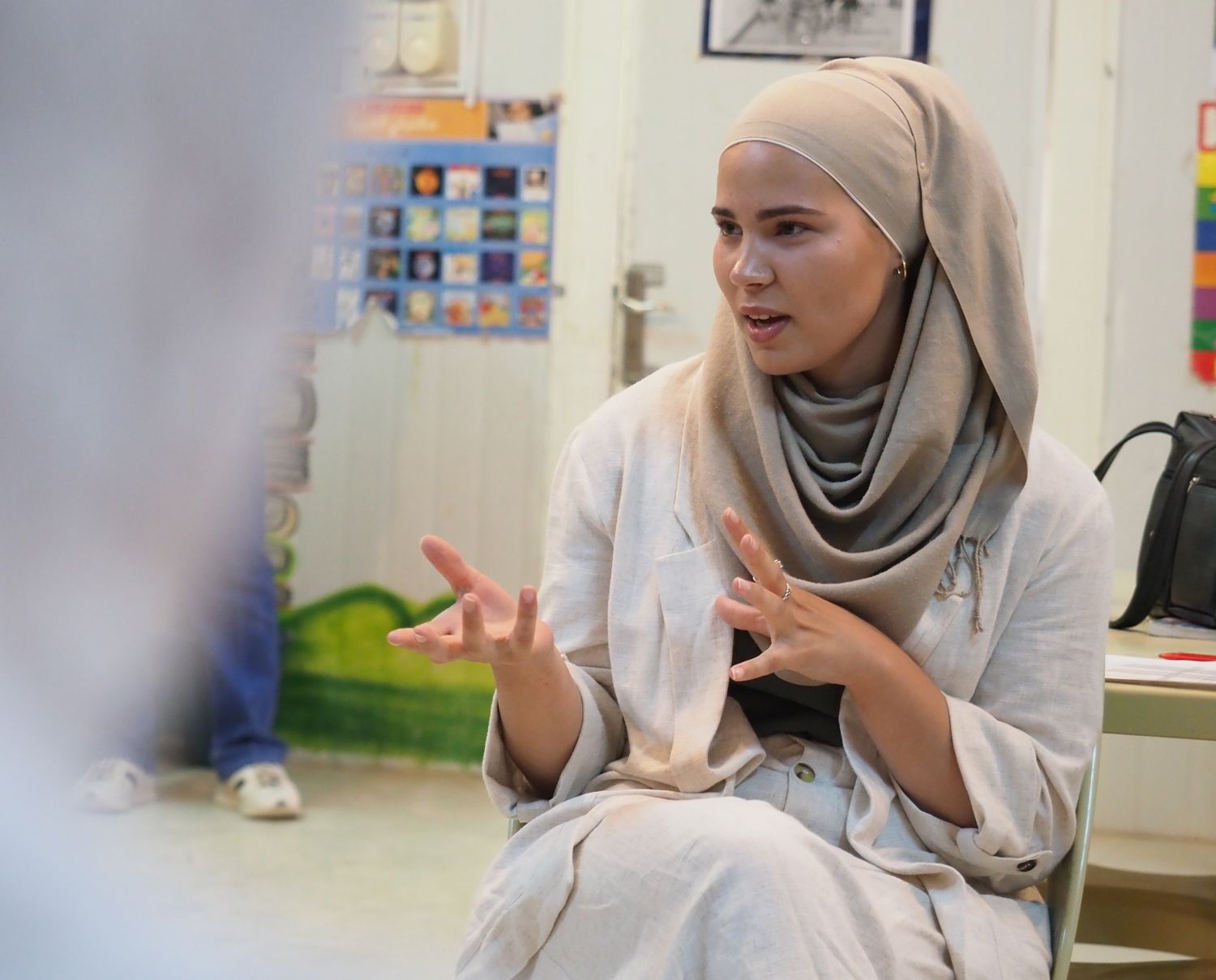
Zaatari refugee camp: Iman meets a group of girls in the seventh grade, who tell her about the Better Learning Programme (BLP). The programme helps children and young people with trauma. The aim is that these students should be able to acquire knowledge at school, despite their high level of anxiety and stress. Professor of educational psychology at the University of Tromsø, Jon-Håkon Schultz, has been in charge of developing the programme.
“Time stood still when I saw that photo. I remember sharing it on social media. It was a hint that we had to wake up – now.”
The Arab Spring was put down hard in Syria, at the same time as IS group began to take root. How did you feel with all this happening in the country where you have your childhood memories?
“We were in shock. It was crazy to think that we had lived there. My mum and dad had even built a holiday home in Syria. Now, we don’t even know if it’s still standing. And if it is, we really hope it’s being used by someone who needs it. We think about all our friends and wonder if they are still alive.”
Iman is taking Middle East Studies at the University of Oslo. In the spring of 2019, she travelled to Jordan as an exchange student for four months.
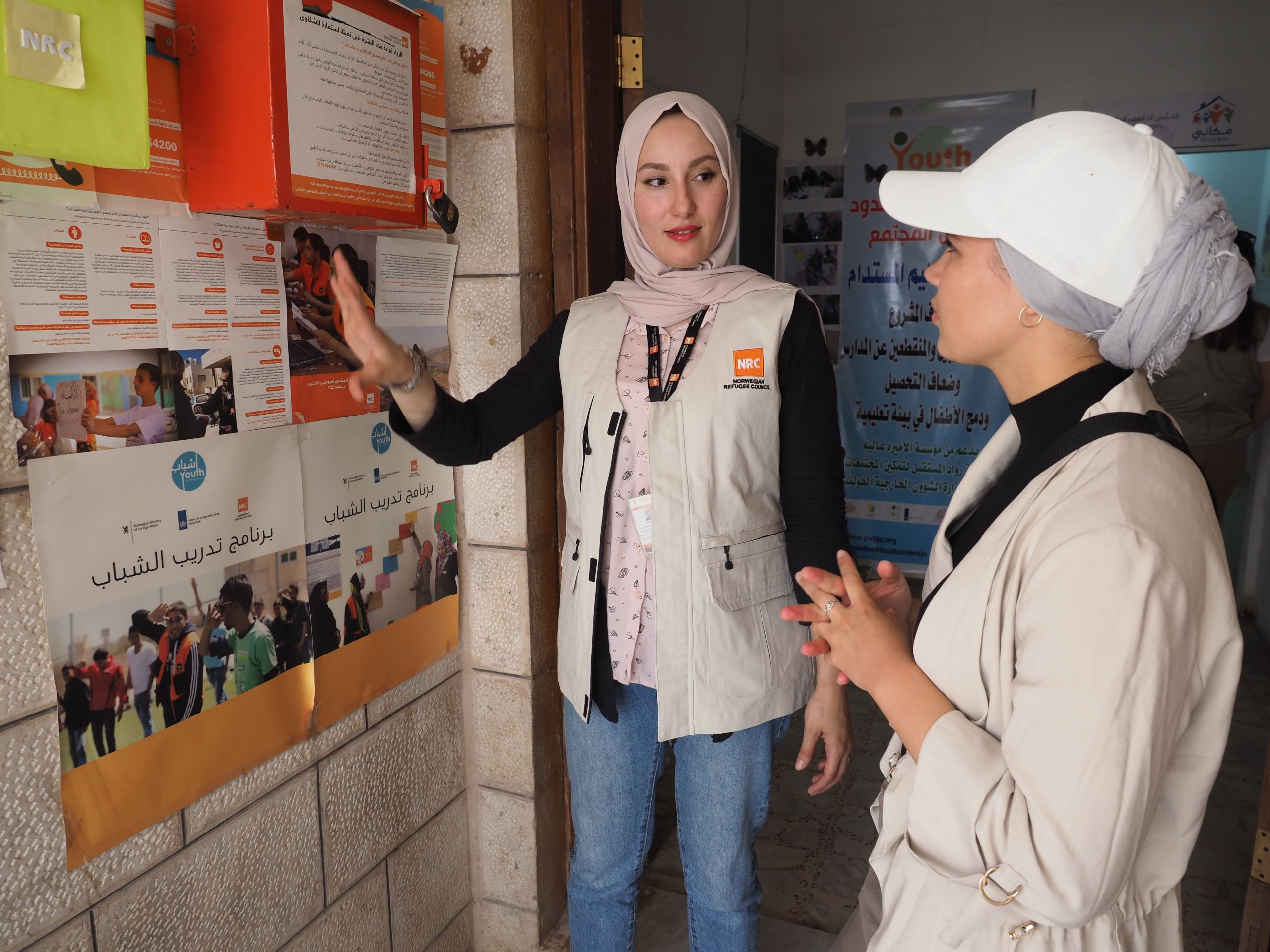
Since the war in Syria broke out in 2012, Jordan has taken in hundreds of thousands of Syrian refugees. Most of them live in host communities in different parts of Jordan. In the city of Irbid, at a youth centre, Iman meets Byna, who works for NRC. Since 2017, NRC has been collaborating with the community-based organisation, Youth Without Borders. Byna says that the goal is to give the youth back theirbelief in themselves and motivate them to do volunteering work.
“I had long dreamed of working with refugees, and it’s something I want to pursue in the future. When I was at lower secondary school, I worked as a volunteer for the Red Cross. Every Sunday, we went to the asylum reception centre in Vestby, and we would find activities for the children living there. We would play in the playground, go to the cinema, go bowling or take a walk on the beach.”
Read more about NRC in Jordan here.
Another actor from “Skam”, Marlon Langeland, collaborated with NRC last year to create a series on Instagram TV called “Marlon’s Journey”. He travelled around the world to meet young people his own age who had been forced to flee.

Since the war in Syria broke out in 2012, Jordan has taken in hundreds of thousands of Syrian refugees. Most of them live in host communities in different parts of Jordan. In the city of Irbid, at a youth centre, Iman meets Byna, who works for NRC. Since 2017, NRC has been collaborating with the community-based organisation, Youth Without Borders. Byna says that the goal is to give the youth back theirbelief in themselves and motivate them to do volunteering work.
Since the war in Syria broke out in 2012, Jordan has taken in hundreds of thousands of Syrian refugees. Most of them live in host communities in different parts of Jordan. In the city of Irbid, at a youth centre, Iman meets Byna, who works for NRC. Since 2017, NRC has been collaborating with the community-based organisation, Youth Without Borders. Byna says that the goal is to give the youth back theirbelief in themselves and motivate them to do volunteering work.

Zaatari refugee camp: Iman meets a group of girls in the seventh grade, who tell her about the Better Learning Programme (BLP). The programme helps children and young people with trauma. The aim is that these students should be able to acquire knowledge at school, despite their high level of anxiety and stress. Professor of educational psychology at the University of Tromsø, Jon-Håkon Schultz, has been in charge of developing the programme.
Zaatari refugee camp: Iman meets a group of girls in the seventh grade, who tell her about the Better Learning Programme (BLP). The programme helps children and young people with trauma. The aim is that these students should be able to acquire knowledge at school, despite their high level of anxiety and stress. Professor of educational psychology at the University of Tromsø, Jon-Håkon Schultz, has been in charge of developing the programme.
Iman in Zaatari refugee camp. When the camp opened on 29 July 2012, it was intended as a temporary solution for housing Syrianrefugees who would soon be returning home. NRC was one of the first organisations to start working in Zaatari. We help people with shelter, informal schooling for children, vocational training for youth, and distribution of emergency aid. In July 2018, 78,552 refugees were registered in Zaatari, according to the UN refugee agency
Iman in Zaatari refugee camp. When the camp opened on 29 July 2012, it was intended as a temporary solution for housing Syrianrefugees who would soon be returning home. NRC was one of the first organisations to start working in Zaatari. We help people with shelter, informal schooling for children, vocational training for youth, and distribution of emergency aid. In July 2018, 78,552 refugees were registered in Zaatari, according to the UN refugee agency
This spring, Iman contacted NRC and asked if she could spend the final week of her stay in Jordan with us. Among other things, we invited her to visit the world’s largest camp for Syrian refugees, Zaatari, which houses almost 80,000 people.
“The camp is like a small town, with streets, markets and shops. It makes sense, because people have lived there for so long. They get married, have children and go to school. The children don’t know any other life. This is their world and everything they know. It reminds me a little of the children I met at the asylum reception centre. It was the only life they knew, too.”
Iman spoke to the refugees in Zaatari in Syrian Arabic. Looking back, she best remembers the generosity with which she was met. How positive, warm and hospitable the people were, despite their difficult lives. Many felt hopeless.
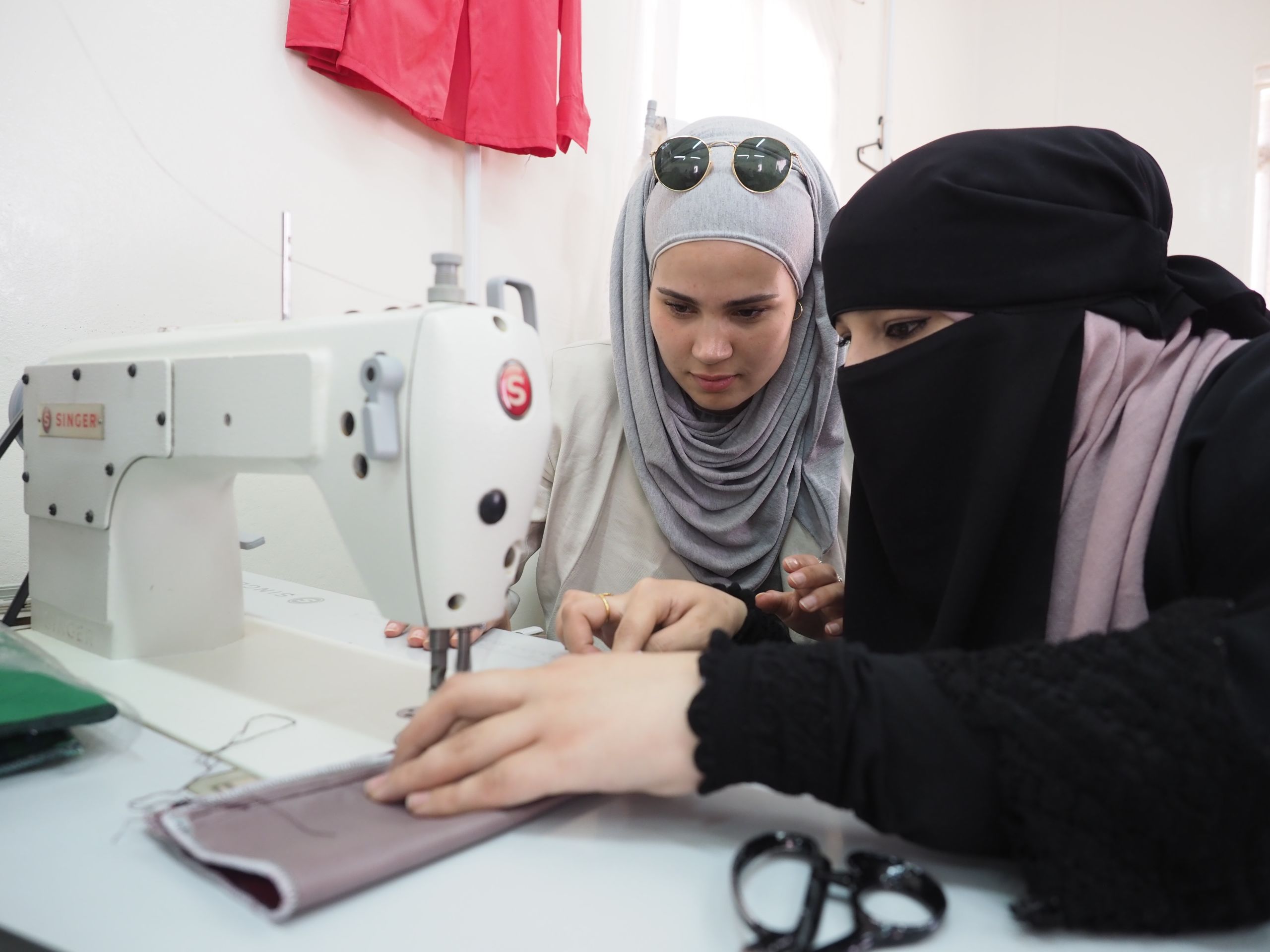
Syrian refugee Ghaida’a came to Zaatari in 2014. In the photo she shows Iman how to sew a pencil-case. The two met at NRC’s youth centre in Zaatari, where Ghaida’a is on a tailoring course. In Jordan, vocational training in tailoring is offered to young people in theZaatari and Azraq refugee camps. The course is for young men and women between the ages of 18 and 23.
Syrian refugee Ghaida’a came to Zaatari in 2014. In the photo she shows Iman how to sew a pencil-case. The two met at NRC’s youth centre in Zaatari, where Ghaida’a is on a tailoring course. In Jordan, vocational training in tailoring is offered to young people in theZaatari and Azraq refugee camps. The course is for young men and women between the ages of 18 and 23.
“But I met a girl my own age. She had been given a space on a three-month sewing course that was organised by NRC. I was touched by the joy she showed from feeling useful. Having something to fill their daily lives helps give the refugees new hope.”
Read more about NRC, school and education here.
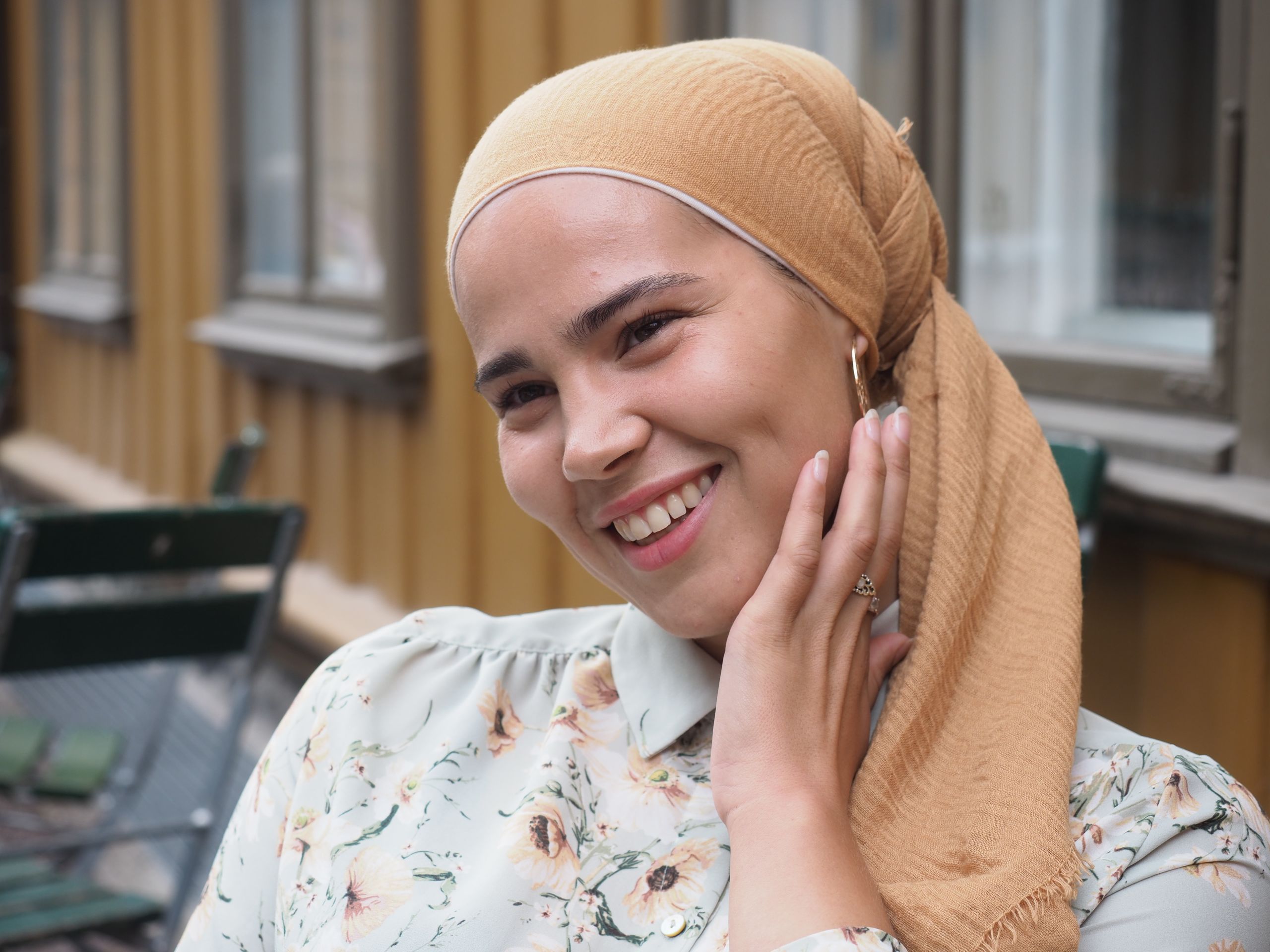
Iman wants to work helping refugees.
Iman wants to work helping refugees.
The sky over the Botanical Garden in Oslo is blue. Iman’s yellow ochre shawl is tied tightly around her head, with one end dangling down the side. She is wearing a light-blue floral dress, buttoned up to her neck.
You helped develop the character Sana. What was important to you to include?
“We agreed that we wanted to show a Muslim girl who wears a hijab but is not oppressed. A girl who is strong and independent.”
“SKAM” became a massive international success, and was hailed for being so innovative. The series follows a group of young people at an upper secondary school in Oslo.
The final year of the series’ four-year run first aired in the spring of 2017. In that final season, Sana is the main character, and the show explores themes including the internet, religion and multiculturalism in Norway.
“It was important to me to include the religious aspect. Because unless you yourself have faith, it is difficult to explain it to others. Like the feeling you have when you pray.”
What would you say are the differences and similarities between you and Sana?
“The similarities are our faith, being a Muslim girl in a secular society and balancing faith and religion with a modern life. The differences are our personalities, our background and how we dress. Sana wears black and dark clothes, while I like colours. Sana is bullied for who she is, and she responds with anger. I’m not like that.”
Iman’s mother is her role model. She is from the south-east of Norway and works as a Norwegian teacher, helping people who are struggling to find work. Iman says of her:
“My mother made some important decisions when she was young, and somehow she still manages to stand by those choices today, after so many years.”
Iman's father is from Tunisia. He left his homeland early and lived for a few years in Germany. He came to Norway and met Iman’s mother, who speaks German. Iman grew up with four siblings, and she is the second youngest.
This autumn, Iman will be travelling around Norway giving lectures about identity, and about daring to be yourself.
So, it was in Jordan that you decided to marry Mourad, is that right?
She laughs a little:
“Yes, but I have always known that I would get married one day. But I needed to find the right person. I’ve gotten to know boys before. But this time everything was completely different. It felt so right.”
A slight breeze plays with her shawl. She says:
